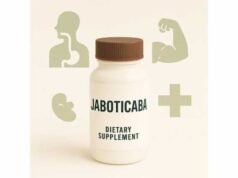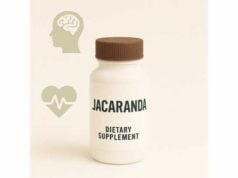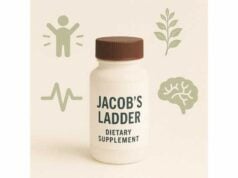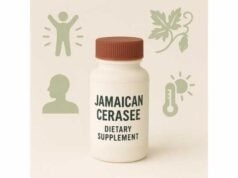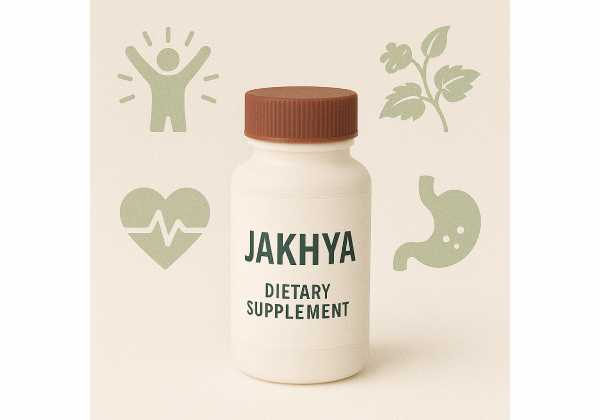
Jakhya—also known as wild mustard or Asian spiderflower seed—comes from the plant Cleome viscosa. In the Himalayan foothills of India, particularly Uttarakhand, these tiny, dark seeds are a staple tempering spice that crackles in hot oil and lends a nutty, herbal aroma to vegetables, dals, and mountain-style stir-fries. Beyond the kitchen, Cleome seeds and aerial parts have a long record in traditional medicine for soothing minor digestive discomfort, easing inflammation, and supporting skin care. Modern laboratory studies point to polyphenols, coumarinolignans (notably the cleomiscosins), and a linoleic-rich seed oil as the bioactive drivers. Human data, however, remain sparse, so it’s best to treat Jakhya as a culinary spice with potential health perks—not a stand-alone therapy. In this guide, you’ll learn exactly what Jakhya is, how it’s used, what the science actually says, how much to use in everyday cooking, and where the safety lines are for adults, kids, and special groups.
Fast Facts
- Tempering with 1–3 g seeds may add antioxidant and antimicrobial compounds to meals.
- Animal and lab studies suggest anti-inflammatory and liver-protective activity; human trials are lacking.
- Typical culinary use: ¼–1 tsp (about 1–4 g) cracked in 1–2 tsp oil per dish.
- Avoid concentrated extracts if pregnant, breastfeeding, on anticoagulants, or with gallbladder disease.
Table of Contents
- What is Jakhya?
- Benefits at a glance
- How to use Jakhya
- Dosage and timing
- Safety and side effects
- What the research says
What is Jakhya?
Jakhya is the culinary name in Uttarakhand (India) for the seeds of Cleome viscosa, a hardy annual herb in the Cleomaceae family. You’ll also see it called wild mustard, dog mustard, Asian spiderflower, or by regional names like “Jakhiya” and “Hurhur.” The plant thrives in hot, semi-arid climates and self-seeds readily, which is why it’s often labeled a weed outside its home cuisine. Despite the nickname “wild mustard,” Jakhya isn’t a true mustard (Brassica spp.). It only mimics mustard’s behavior in the pan: the seeds sputter and release aroma when they hit hot fat.
From a composition standpoint, Jakhya seeds are notable for a linoleic-rich oil profile (often 45–60% linoleic acid, with meaningful oleic, palmitic, and stearic acids), along with minor alkanes and other fatty constituents. The aerial parts and seeds also contain phenolic compounds and a distinctive set of coumarinolignans known as cleomiscosins (A–D). In traditional systems, preparations from the plant have been used for minor digestive upset, skin applications on small wounds, and occasionally for fevers.
In food culture, Jakhya plays the same culinary role as cumin or mustard seeds in other regions: a quick hot tempering to perfume oil before tossing with potatoes (aloo), leafy greens, or lentils. Its flavor sits between toasted mustard and oregano with a resinous, herb-nut finish. While folk medicine uses are broad, modern clinical evidence in humans is still limited. Thus, the most grounded way to add Jakhya to your life is through cooking—where the risk is low, the flavor payoff is high, and the potential bioactive benefits ride along with the meal.
Benefits at a glance
Antioxidant support. Extracts from Cleome species show free-radical scavenging in test systems, which tracks with their phenolic and flavonoid content. In everyday terms, this means the spice can modestly raise the antioxidant density of a dish when used in tempering, especially if you include other polyphenol-rich ingredients (leafy greens, tomatoes, onions).
Antimicrobial activity (preclinical). Essential oil and extract studies across Cleome species—including C. viscosa—demonstrate inhibitory effects against certain bacteria and fungi in vitro. That doesn’t translate to treatment of infections, but it supports the long-standing culinary logic of tempering: briefly blooming seeds and aromatics in hot oil can help keep moist vegetable dishes more stable and flavorful. It’s a kitchen tradition with an interesting scientific echo.
Anti-inflammatory properties (animal models). Coumarinolignans isolated from C. viscosa have reduced inflammatory markers and behaviors in arthritic rat models. This is mechanistic, early-stage evidence; it cannot be assumed to produce the same magnitude of effect in humans. Still, it’s the kind of signal that explains why certain spices are favored in cuisines for “digestive comfort.”
Gastro-protective and hepatoprotective signals (preclinical). In rodents, standardized C. viscosa extracts have shown protection against experimentally induced gastric and liver injury, likely via antioxidant and cell-signaling pathways. As with many botanicals, these findings are hypothesis-generating. They don’t replace medical care, but they justify culinary use for flavor with potential ancillary benefits.
Skin applications (traditional, animal data). Ointments prepared from C. viscosa extracts accelerated wound closure in animal models. In traditional practice, poultices and washes are used on minor skin issues. If you’re curious, keep it simple: food-grade oil infusions are gentler than concentrated extracts, and any non-food topical should be patch-tested first.
What’s the bottom line? As a spice, Jakhya is a safe, flavorful way to diversify your cooking. Its lab-bench and animal evidence suggests anti-inflammatory and antimicrobial potential, but there are no robust human trials. Use it for taste; consider any health bump a bonus until better clinical data arrive.
How to use Jakhya
Temper it right. Jakhya shines in tempering (also called “tadka” or “chaunk”). Heat 1–2 teaspoons of neutral or mustard oil over medium-high heat until shimmering. Add ¼–1 teaspoon (about 1–4 grams) of Jakhya seeds. They’ll crackle in 3–6 seconds; immediately add aromatics (green chili, garlic), then toss in boiled potatoes, greens, or cooked lentils. Finish with salt and a squeeze of lemon. The quick bloom releases flavor without scorching the seeds.
Pairing ideas.
- Vegetables: Potatoes, colocasia (arbi), green beans, pumpkin, and mustard greens pair naturally with Jakhya’s herb-nut edge.
- Lentils: Temper cooked masoor or moong dal with Jakhya, garlic, and dried red chili for a minimalist pahadi dal.
- Grains: Sprinkle tempered Jakhya over millet or rice pilafs; it adds aroma and gentle crunch.
- Yogurt sides: Stir a small tempering into plain yogurt with grated cucumber and salt for a savory raita.
Flavor balance. Jakhya is less pungent than black mustard but more resinous. To balance, add bright acids (lemon, tomato), soft sweetness (caramelized onion), and fresh herbs (coriander, dill). For earthy synergy, combine with cumin or ajwain. For heat, pair with green chilies rather than heavy dried chili powders to keep the profile clean.
Storage. Whole seeds keep 9–12 months in a cool, dark cupboard in an airtight jar. Avoid grinding; the whole-seed crackle is central to the experience. If the seeds stop sputtering in oil, they’re stale—toast a pinch dry for 15 seconds to check; a flat aroma means it’s time to replace.
Non-culinary uses (practical notes). Traditional preparations include warm seed-oil infusions for massage or simple pastes for minor skin use. If you explore these folk routes, stick to food-grade ingredients, keep contact time short, and discontinue with any irritation. Avoid eyes and mucous membranes.
Sustainability and sourcing. Look for regional Uttarakhand co-operatives or spice merchants that identify the seed as Cleome viscosa. Fresh lots are small and seasonal; buy modest quantities and replenish rather than stockpiling.
Dosage and timing
Culinary use (most appropriate).
- Per dish: ¼–1 teaspoon whole seeds (≈1–4 g), cracked in 1–2 teaspoons oil.
- Per day in a home kitchen: 1–2 teaspoons total (≈4–8 g) across meals is typical for regular cookery and well within culinary norms.
These ranges are based on traditional cooking patterns rather than clinical dosing. Because Jakhya is used whole and briefly heated, the net intake of bioactives is modest and tempered by the meal matrix (fat, fiber, protein).
Timing with meals. Add seeds at the start of cooking (temper first) or drizzle the hot tempering over finished dishes to preserve aroma. If you’re interested in digestive comfort, use Jakhya at the main meal you find heaviest—often dinner—paired with warm spices (cumin, ginger) and vegetables high in potassium and fiber.
Extracts and capsules. Concentrated Cleome viscosa extracts are not standardized for home use, and safety data in humans are limited. If a practitioner suggests an extract, ask for the exact extract ratio, standardized compound, and intended duration. Without those details, prefer the culinary route.
Children. As a spice in family meals, a pinch (≤0.5 g per serving) is reasonable for children who tolerate typical Indian temperings. Avoid concentrated extracts.
Older adults and those managing chronic conditions. As part of normal meals, Jakhya is generally well tolerated. If you’re on medicines with narrow therapeutic windows (e.g., warfarin, cyclosporine) or have gallstone disease, read the safety section below and consider checking with a clinician before making big changes to spice habits.
Hydration and salt pairing. Temperings often include salt. If you’re watching sodium, temper seeds in oil with aromatics first, then season lightly at the table. The fat carries aroma so you can often use less salt without sacrificing flavor.
Safety and side effects
Culinary amounts are usually well tolerated. In standard cooking quantities (a few grams per dish), adverse effects are rare. The most common issue is over-toasting the seeds, which imparts bitterness. If you’re new to Jakhya, start with ¼ teaspoon per dish to learn the bloom point.
Allergy and intolerance. True seed allergy to Cleome is uncommon but possible in people with broad seed or pollen sensitivities. Signs include itching, hives, throat tightness, or wheeze—seek urgent care for severe reactions. For mild digestive sensitivity (bloating, reflux), use smaller amounts and avoid very spicy temperings at night.
Medication considerations.
- Anticoagulants/antiplatelets: Lab and animal work suggests anti-inflammatory activity for Cleome constituents. While there’s no direct evidence of increased bleeding risk from culinary use, avoid high-dose extracts and keep culinary amounts moderate if you take warfarin, DOACs, or daily aspirin.
- Hepatic disease: Preclinical hepatoprotection does not guarantee safety in active liver disease. Stick to culinary use and avoid over-the-counter extracts unless supervised.
- Gallbladder disease: Tempered oils can trigger symptoms in people with gallstones; emphasize steaming and lighter finishing oils if you’re sensitive.
Special populations.
- Pregnancy and breastfeeding: There are no high-quality human data for Cleome viscosa extracts in pregnancy/lactation. Culinary use in normal quantities is the prudent upper limit. Avoid concentrated products.
- Children under 5: Keep to tiny amounts folded into family meals. Avoid direct seed-heavy toppings that could pose a choking risk.
Topical use. If experimenting with a simple food-grade oil infusion, patch-test on the inner forearm for 24 hours. Discontinue with redness or itching. Do not apply to open or deep wounds, and avoid eyes.
Adulteration and quality. Because “wild mustard” is a loose nickname, mislabeled seeds occasionally reach markets. Buy from suppliers who explicitly state Cleome viscosa and have a fresh, resinous aroma. Stale seeds lose the characteristic crackle.
What the research says
Bioactive profile. Analyses of C. viscosa identify a linoleic-rich seed oil alongside phenolics and coumarinolignans, especially cleomiscosins A–C. This chemistry provides a plausible foundation for antioxidant and anti-inflammatory effects. Seed-oil fatty acids (commonly ≈47–61% linoleic, ≈17–27% oleic, with palmitic and stearic making up much of the remainder) map to a neutral to heart-friendly lipid profile in dietary terms, recognizing that cooking portions are small.
Preclinical efficacy. In arthritis-model rodents, coumarinolignoid-rich fractions reduced joint swelling and inflammatory cytokines and appeared safe up to high single doses in acute studies. Separately, rodent studies using standardized Cleome extracts have reported protection in gastric-ulcer and chemically induced liver-injury models—likely via antioxidant pathways and modulation of inflammatory signaling. These signals are consistent with traditional uses (digestive comfort, soothing of aches), but they remain preclinical.
Antimicrobial signal. Essential oils and nanoemulsion preparations from Cleome have inhibited Candida albicans and several bacterial strains in vitro and affected biofilms in lab systems. Again, these are bench findings. In the kitchen, the realistic “translation” is simply that a Jakhya tempering supports a flavorful, aromatic cooking style; it is not a substitute for hygiene or medical therapy.
Human evidence gap. There are currently no large, well-controlled clinical trials of Jakhya (C. viscosa seeds) as a stand-alone intervention for any condition. That’s why this guide frames Jakhya first as a food—where its safety margin is strongest—and only secondarily as a potential source of beneficial phytochemicals.
Practical takeaway. Enjoy Jakhya for its unique pahadi flavor. If you’re pursuing anti-inflammatory or digestive benefits, build the whole meal accordingly: plenty of vegetables, legumes, modest oil, and gentle acids. That context is where culinary botanicals reliably help—by nudging the pattern of eating—while the lab-bench promise of C. viscosa continues to evolve.
References
- Pharmacological and Toxicological Study of Coumarinolignoids from Cleome viscosa in Small Animals for the Management of Rheumatoid Arthritis 2023 (In vivo, toxicology)
- Antifungal activity of nanoemulsion from Cleome viscosa against Candida albicans isolates 2021 (In vitro)
- Chemical composition of the fatty oils of the seeds of Cleome viscosa accessions 2012 (Lipid composition)
- Studies on wound healing activity of Cleome viscosa Linn. (Capparidaceae) aerial extract in different rat models 2014 (Animal, topical)
- Hepatoprotective Effects and Safety Evaluation of Coumarinolignoids Isolated from Cleome viscosa Seeds 2010 (Animal, safety)
Disclaimer
This information is educational and does not substitute for personalized medical advice, diagnosis, or treatment. Jakhya (Cleome viscosa) is best used as a culinary spice. Do not use concentrated extracts to self-treat any condition. If you are pregnant or breastfeeding, have liver, gallbladder, or bleeding disorders, or take prescription medications, consult a qualified healthcare professional before making significant changes to your diet or using herbal products.
If you found this guide useful, please consider sharing it on Facebook, X (formerly Twitter), or your favorite platform, and follow us for future updates. Your support helps us continue producing careful, evidence-aware articles. Thank you.

